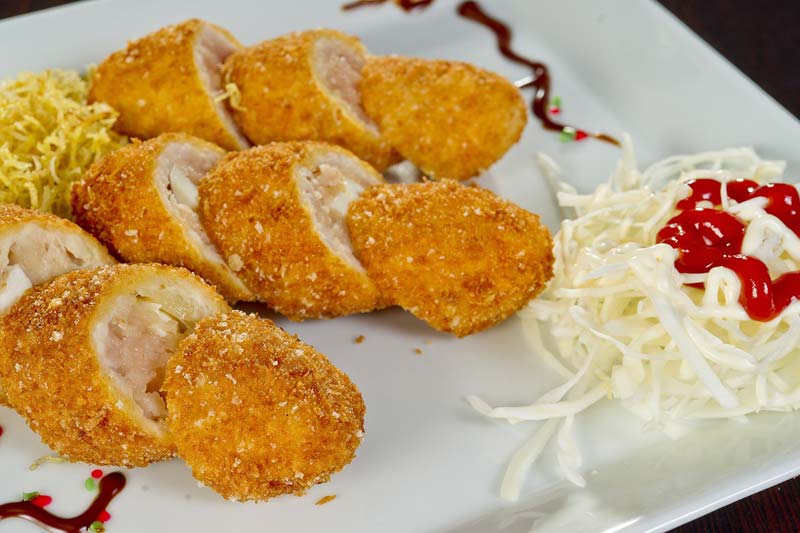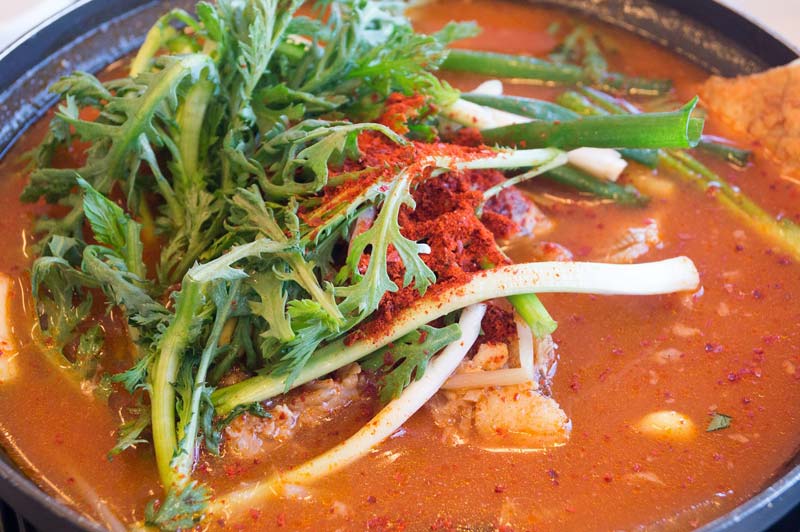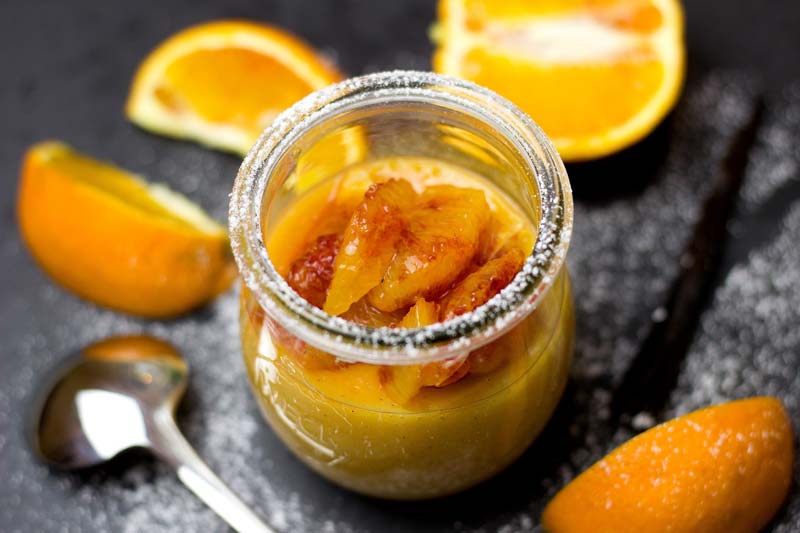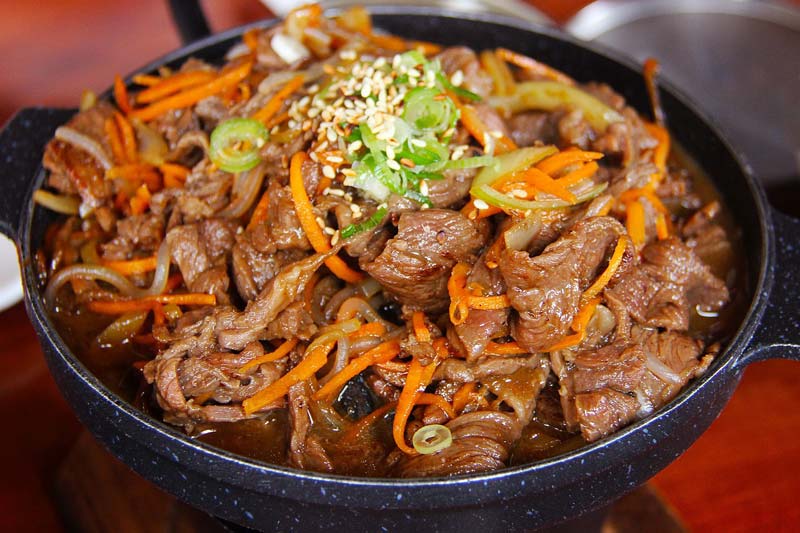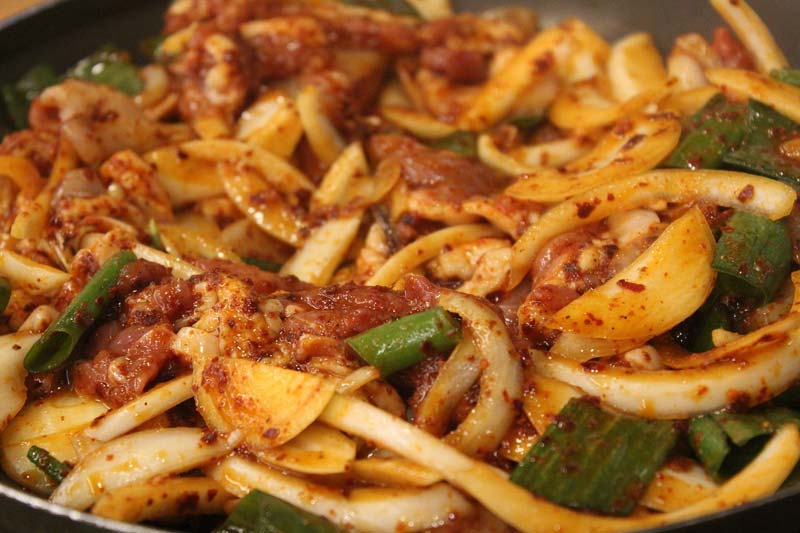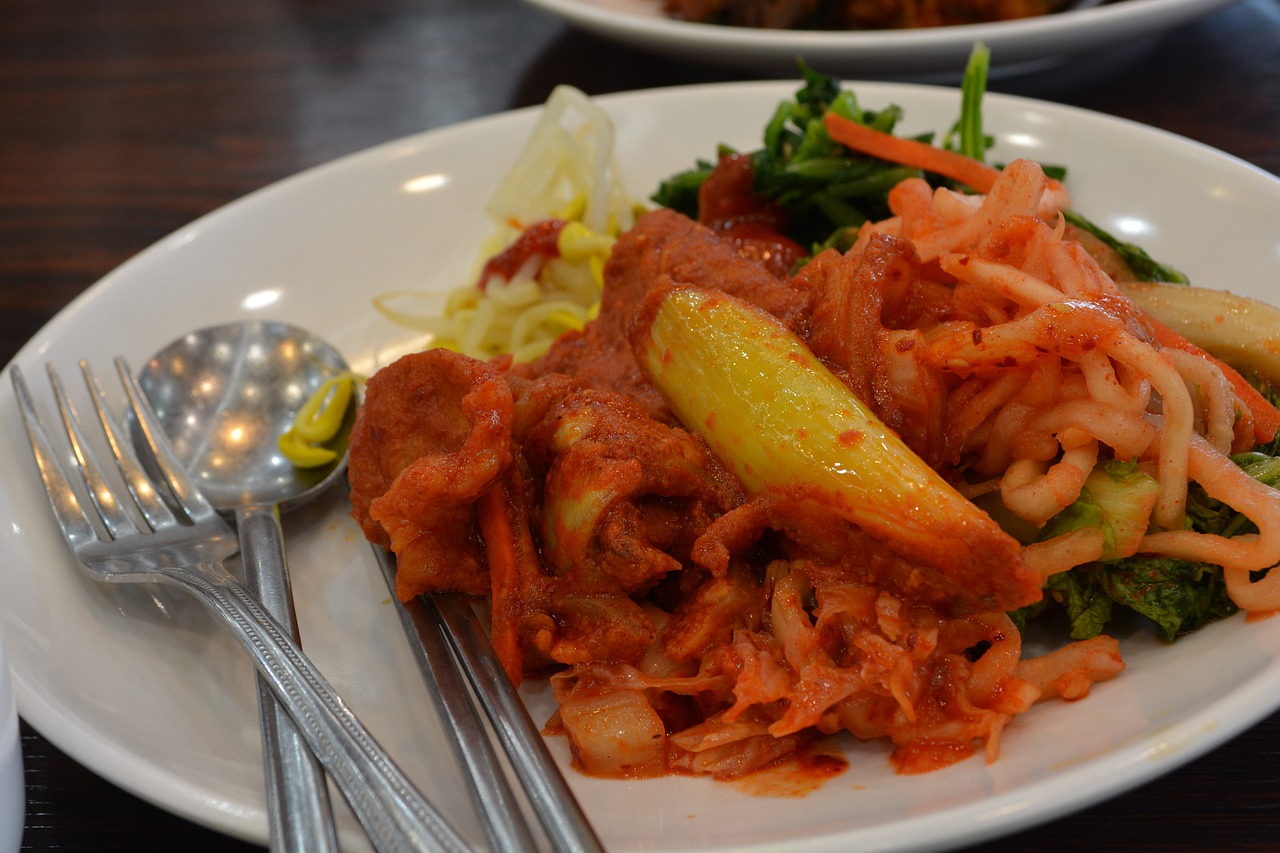In cooking are used some materials which can generate special taste of the food while preserving original flavor of each ingredient. The materials can be roughly grouped into ‘Yangnyeom’ (condiments), ‘Jomiryo’ (seasonings) and ‘Hyangsinryo’ (spices). Condiment of Korean food writes in Chinese character as ‘Yaknyeom’ which means ‘bearing in mind to benefit human body like medicine.’
Seasoning in Korean cooking include materials that help produce such basic tastes as salty, sweet, sour, hot and bitter taste. Salt, soybean sauce, hot pepper paste, soybean paste, vinegar and sugar are included in the seasonings.
Spice in Korean cooking indicates material that retains good aroma or hot, bitter savory taste in itself. Spice reduces odor of food and helps produce better taste with its own good aroma. Ginger, mustard, pepper, sesame oil, and powdered sesame mixed with salt, leek, garlic, ginger and Cheoncho are included in spices. In cooking food for royal court, most of the seasonings available in Korea were used except that hot pepper and its powder were rarely used. The basic seasoning in royal court was soy sauce.
The role of garnishes in Korean food is to decorate and embellish the food, thereby arousing appetite for the eaters. Therefore, they are more focused on shape and color than on taste. The garnishes are also called ‘Utgi’ or ‘Kkumi.’ The basic colors of Korean foods are red, green, yellow, white and black. These five colors are based on the ‘Five elements theory’ of the old Korea and can be found in daily meals and banquet cuisines.
Condiments
Salt
At the end of Joseon dynasty, ‘Horyeom’ (crude salt) and ‘Jaejeyeom’ (refined salt) were used in royal court and ordinary houses. Horyeom involved many impurities and tastes bitter, thus it was mainly used in preparing pickled vegetable or soy, while Jaejeyeom was used as seasoning for food.
Honey
Honey was expensive in the past, so ordinary people could not use it often. In royal court, however, honey was widely used in making rice cake and cookie as well as in cooking food. Honey writes in Chinese character as ‘Cheong’ (clear). Transparent and high-quality honey was called ‘White cheong’ while yellow honey was called ‘Yellow cheong.’
Yeot (taffy) and Jocheong (grain syrup)
They were used to generate sweet taste in food, but nowadays liquid taffy is widely used instead of the two.
Sugar
Sugar had been used since Goryeo dynasty but was not diffused into ordinary houses. Up to the year 1950, unrefined yellow sugar had been generally used.
Vinegar
In the old days, vinegar was produced by preserving liquor in a jar. If stored for a long time, acetobacters penetrate into the liquor, oxidizing alcohol and generating acetic acid. Then, transparent and yellowish green liquid was produced and gathered at upper part of the jar. The liquid scooped up from the jar was used as vinegar. Vinegar could be obtained continuously by pouring more liquor into the jar to fill the vacancy. The vinegar produced in this way had peculiar aroma, and quite different from that of nowadays.
Hot pepper
Immature green peppers as well as ripe red peppers are used in cooking. Generally, red peppers are dried and ground into powder, to be used in making kimchi and hot pepper paste. Threaded red peppers are mostly used as garnish.
Black pepper
Introduced into Korea from China in the middle of Goryeo dynasty, black pepper has been used in cooking as a spice yielding hot taste. Korea had local hot spice named Cheoncho, which was gradually replaced by black pepper after the latter was introduced.
Mustard
Seeds of leaf mustard are ground into powders to be used as mustard. Powders themselves do not have hot taste, so they are soaked into warm water and stored at warm place until they generate hot taste. When they come to have hot taste, they are seasoned with vinegar, sugar and salt to be used in cooking vegetables or raw fish.
Edible oil
Vegetable oil such as sesame oil and wild sesame has been used in cooking. In royal court, sesame oil was widely used in making food and pastry.
Powdered sesame mixed with salt
Wash sesame after clearing out impurities. Stir-fry them on a pan and add a little salt before they are cooled off, and grind them in a mortar half fully. Powdered sesame obtained from this process can be used in cooking as condiment. Sometimes fried sesame is used without being ground. ‘Silggae’ is a kind of sesame whose inner shells are removed by mixing. It is soft and colored white.
Garnishes
Egg garnish
Separate the egg white and yolk and, without causing foam, dissolve them on a pan. Next, stir-fry them thinly and then shred them into meatball type (diamond form) or domino type (rectangular form) for use as garnish.
Alssam (eggroll stuffed with chopped meat)
Alssam is made as follows; Beef is minced, seasoned and shaped into small meatballs. Then, egg is dissolved on a pan and spread round, and meatballs are laid above the egg, all of which are folded into half and then fried, to become a crescent shape Alssam. The food is used as garnish for sinseollo, bibimbap and stewed dish, etc.
BongOri (meatball)
Beef is minced, seasoned and made into meatballs of bean size. The meatballs are then coated with flour and egg, to be fried on a pan. ‘BongOri’ cooked in this way are used for hot pot (small sized ones) and meatball soup (larger ones).
Minari chodae (parsley kebab)
This is made as follows; parsley or ‘silpa’ (small green onion) is washed, passed through a bamboo skewer, and then added with flour and coated with egg, to be fried on a pan. ‘Miniari chodae’ cooked through this process is also called ‘Minari jeok.’ Cut into proper size, it is used as garnish for hot pot, steamed dish, etc.
Minari (parsley)
Parsley is washed and its leaves taken off, and its stalks are cut into 4cm length and preserved with salt, to be fried on a pan until its color changes to blue. Then, it can be used as garnish for food. Small green onion can be used instead of parsley. The green parts cut from cucumber and pumpkin can be also fried for use as garnish.
Hwanghwachae
Also called ‘Neopnamul,’ it is made with dried day lily which is being soaked in water and divided by two. After squeezing moist, fry it on a pan with sesame oil, then it will become Hwanghwachae which can be used for Japchae (mixed dish of vegetables and sliced meat) as garnish.
Red pepper
Threaded red peppers are used as garnish for wild greens or hard-boiled foods. Not only dried peppers but also those shredded in chunk can become garnish. Normally dried peppers are used for kimchi, but in the summer chunk pepper or dried pepper soaked in water and ground is also used in making ‘Haet kimchi’ (new kimchi made with the year’s harvest).
Pine nuts
Pine nuts are also called Baekja, Silbaekja, or Haesongja. After their shells are removed, they shall be laid on a paper spread above chopping board to be minced with knife. Oil is easily soaked out of pine nuts and clustered, so pine nut powders need to be laid on dry paper, thereby draining out their oil before use. In royal court, pine nut powders were used as garnish for Yukhoe (dish of minced raw beef) and Jeonbokcho (dish of ear shell) as well as for vinegared paste. They are also used for rice cake and pastry.
Pine nuts (not powdered) can be used in cooking steamed dish and hot pot, or put into making rice cake and flavored glutinous rice. They are also served into juice, punch and tea.
Mushroom
Various kinds of mushroom such as pyogo, mokee, seokee and agaric are soaked in water before use in cooking. Shredded pyogo is served raw as garnish. The mushroom is also cut into meatball type (diamond form) or domino type (rectangular form) to be used for steamed dish and hot pot. Small pyogo in its original shape is mixed into pancake or used for steamed dish as garnish.
Walnut and ginkgo
Walnuts are shelled with their contents preserved, soaked in warm water, and then their inner shells taken off before fried on a pan which is pre-heated and spread with oil. Then, rub them with dry cloth or paper to remove skins. Walnut and ginkgo prepared in this way are used as garnish for steamed dish and hot pot.
(tradition/tradition4_2.jsp)
